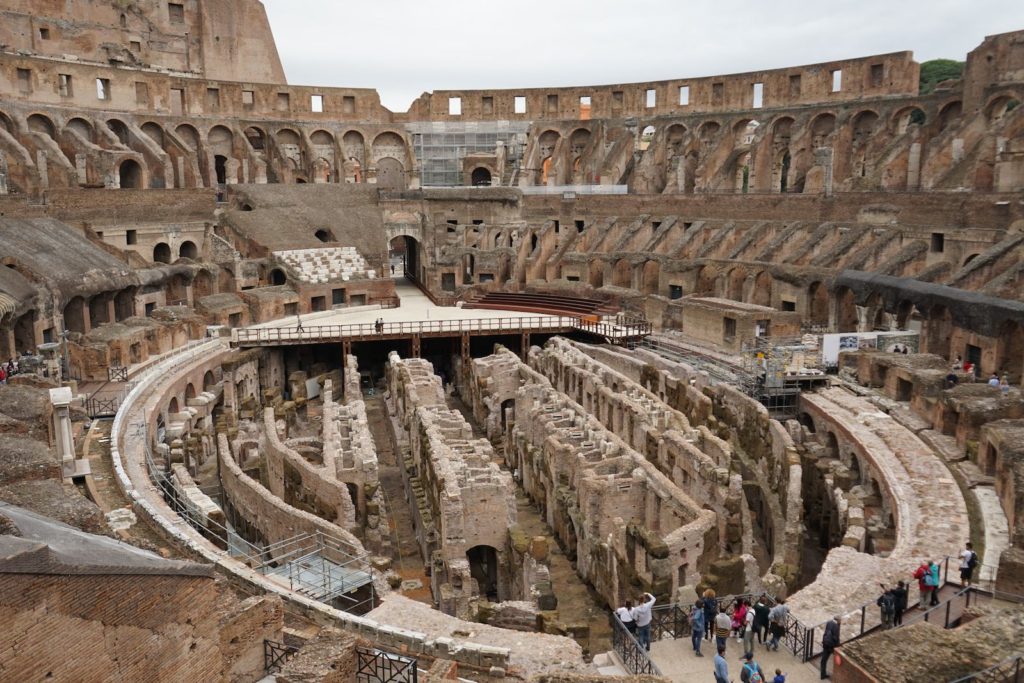
The Colosseum Architecture
The Colosseum boasts an elliptical shape, measuring 156 meters in its short axis and 188 meters in its long axis. It proudly stood at 50 meters in height, spanning a length of 190 meters and a width of 156 meters. This architectural marvel incorporated diverse materials in its construction: load-bearing pillars and external walls were fashioned from travertine blocks, while tufa blocks and bricks formed the stairs and radial walls. The integrity of the structure was fortified by sturdy arches and vaults.
Estimates suggest that the Colosseum could house anywhere from 50,000 to 80,000 spectators. An intricate network of 80 entrances and exits facilitated access. Among these, 76 catered to the general public, while the remaining four were reserved for the emperor, esteemed political and religious figures, as well as the main participants in the spectacles.
Similar to modern stadiums, the Colosseum had tickets corresponding to a number atop one of the entry gates, directing individuals to their designated seating tiers. The seating area, known as the “cavea,” was divided based on social classes, divided into five sections via corridors.

Seats nearest to the arena were reserved for senators, while the upper tiers accommodated knights and other societal strata. The highest section, the “summa cavtains and spacious restrooms capable of accommodating a full audience.
Impressively, the Colosseum boasted a retractable roof mechanism. On hot summer days, the roof was deployed over the upper deck to shield spectators from the sun. This system was managed by sailors from the Roman Navy stationed around the apex of the Colosseum’s arcade.
The arena floor was composed of wood covered with sand. Beneath the arena lay the hypogeum, an elaborate network of tunnels, corridors, and cellars.
The Colosseum underground was utilized as quarters for gladiators, slaves, storage of weapons, game equipment, and cages for animals. The construction also integrated lifts operated via pulleys and ropes, providing direct access to the arena via trap doors.
